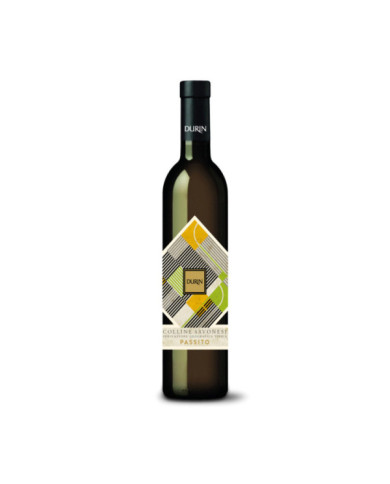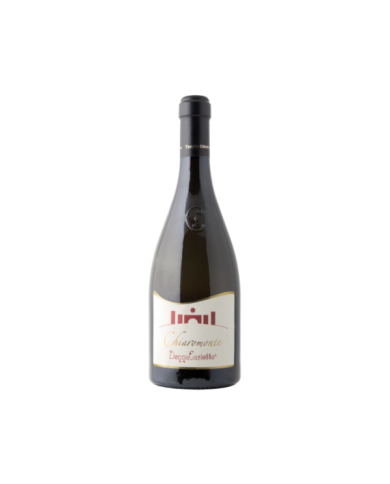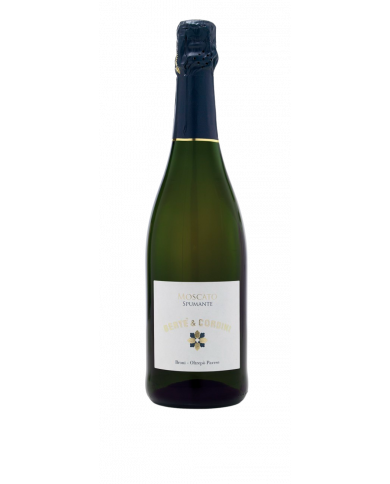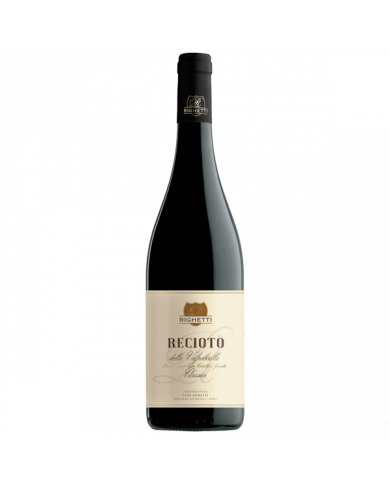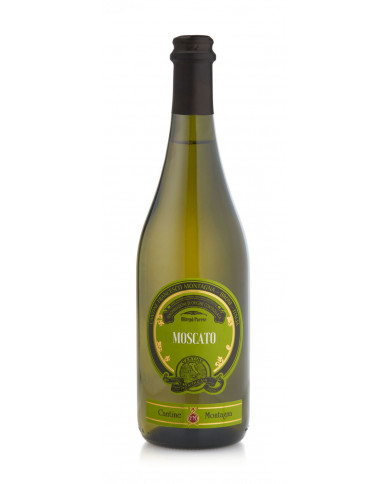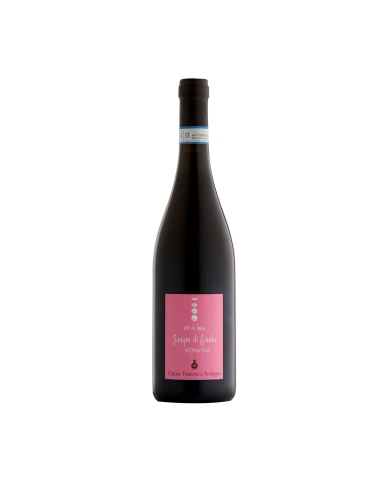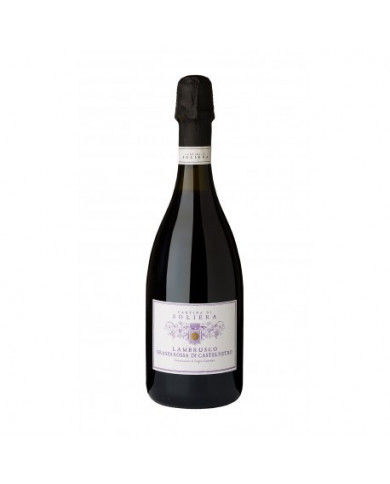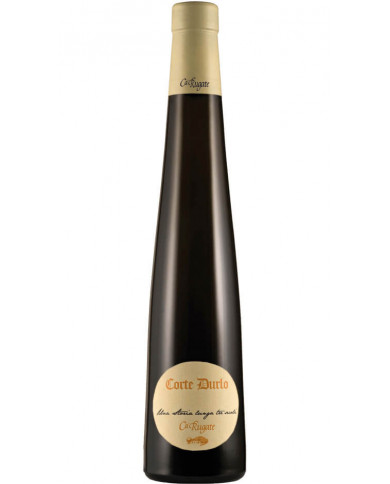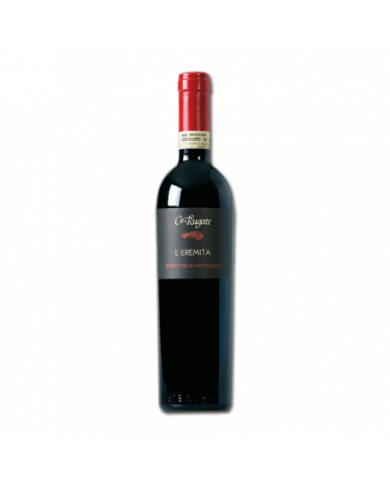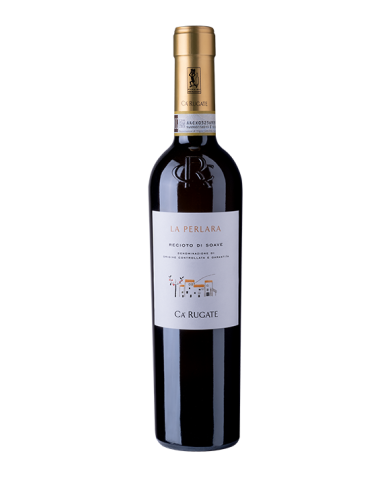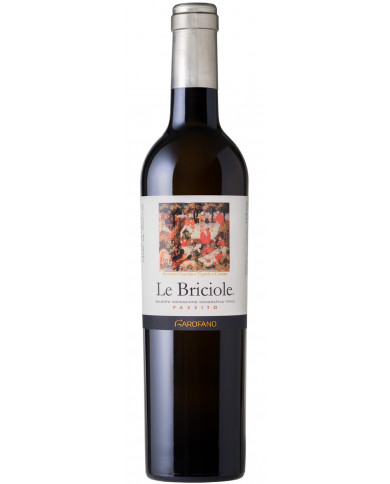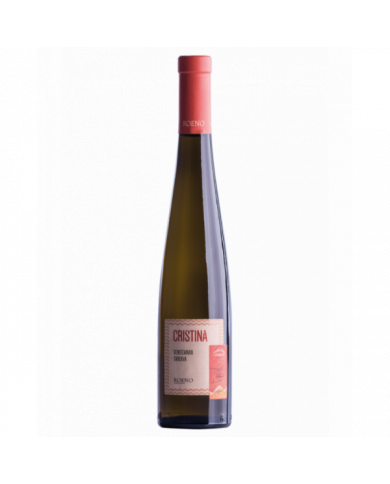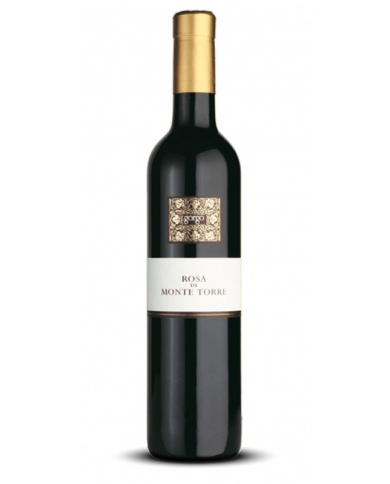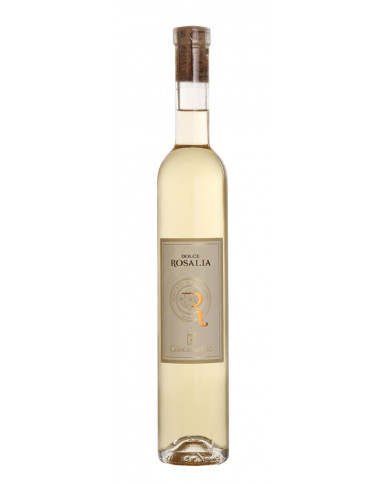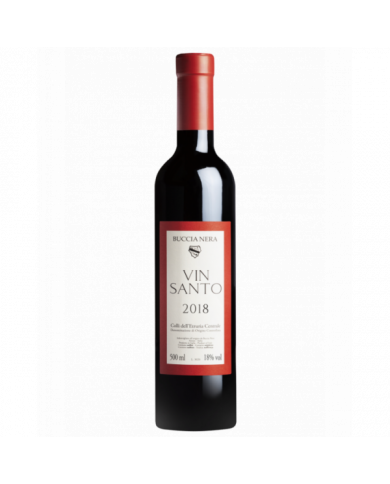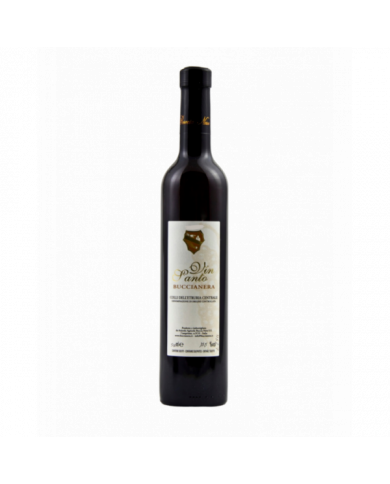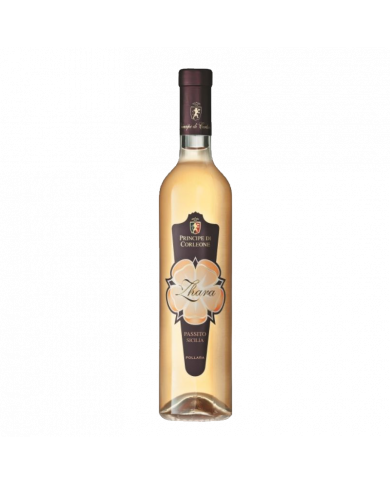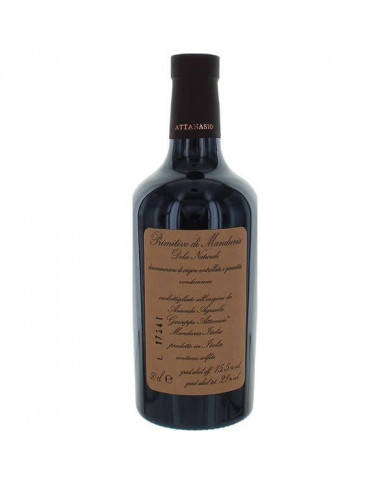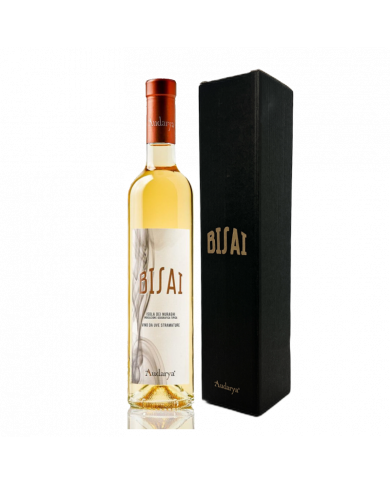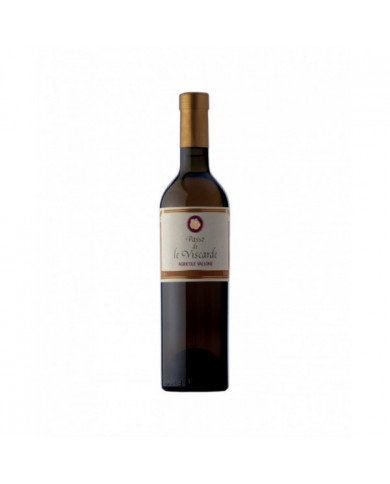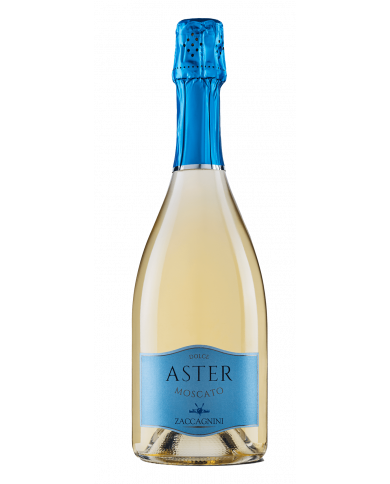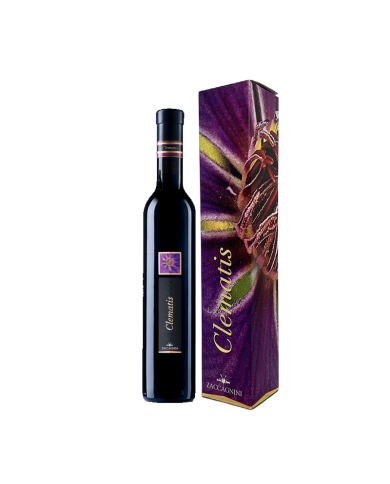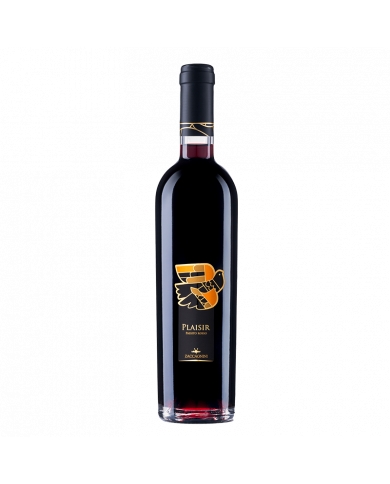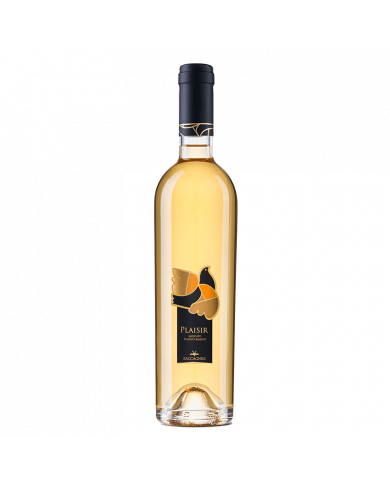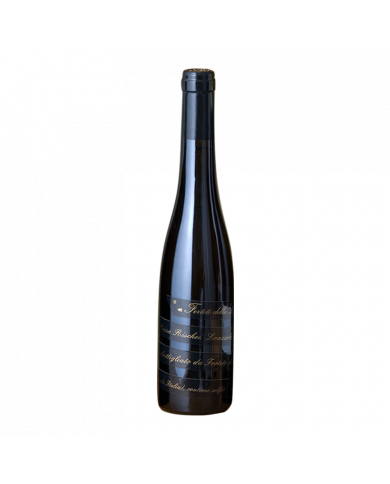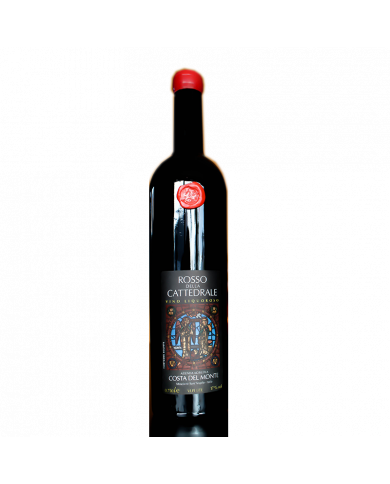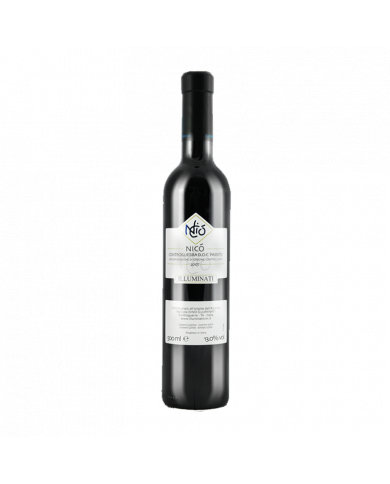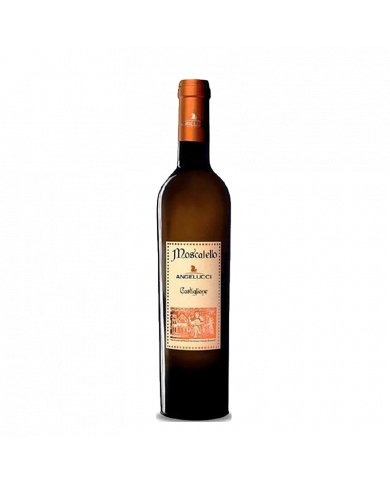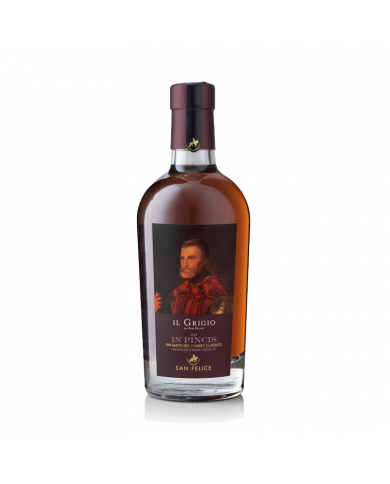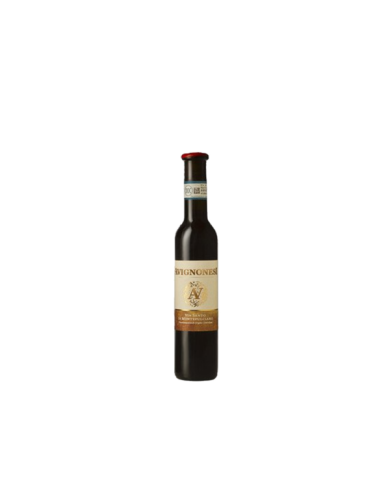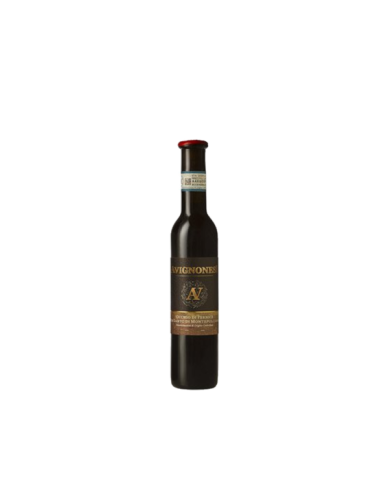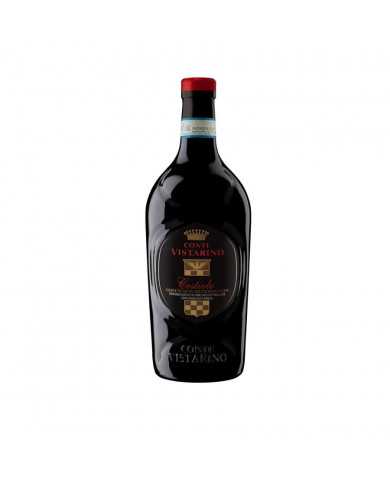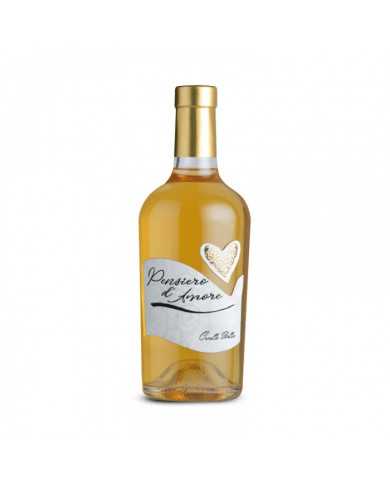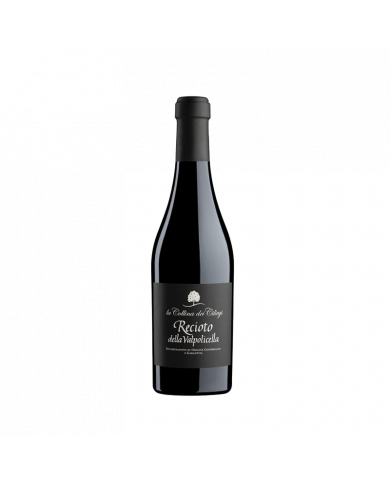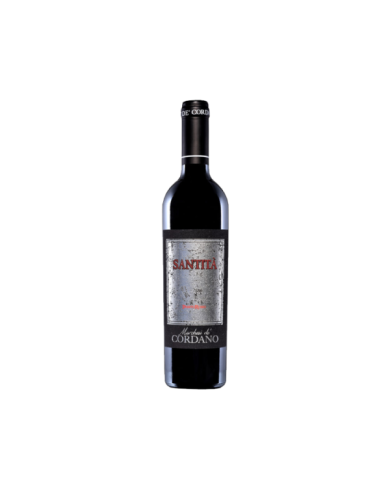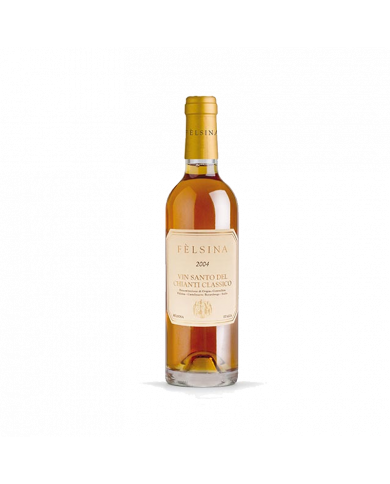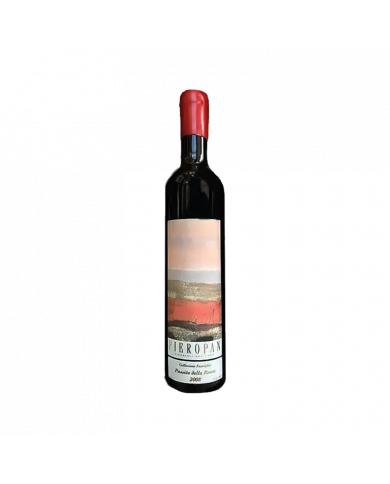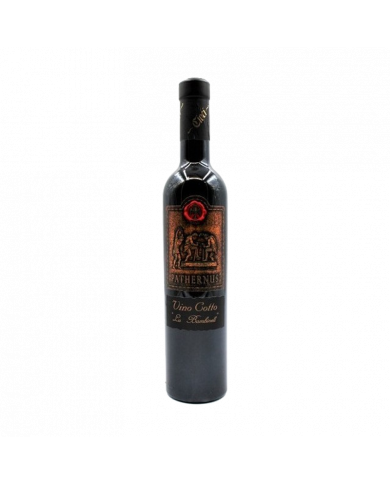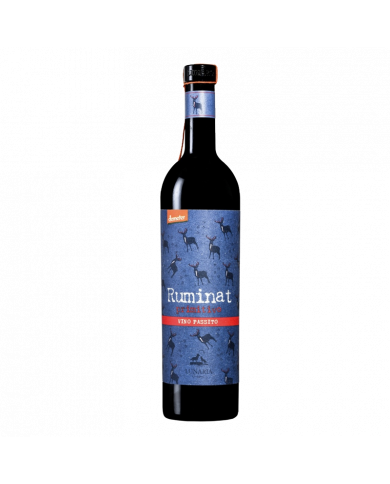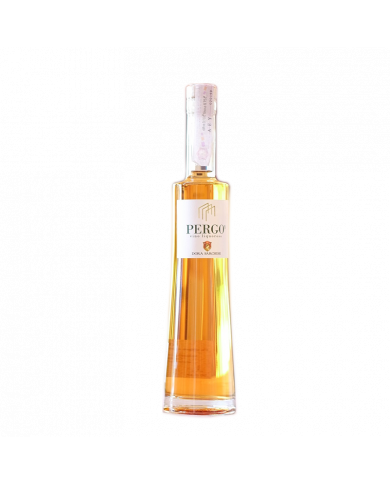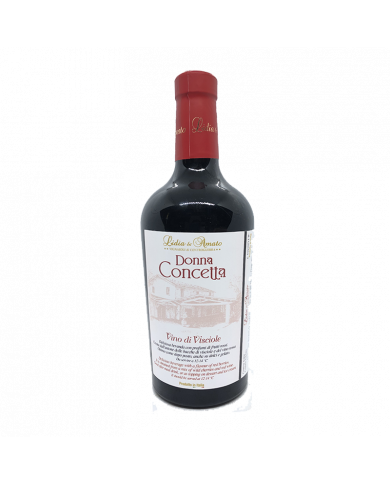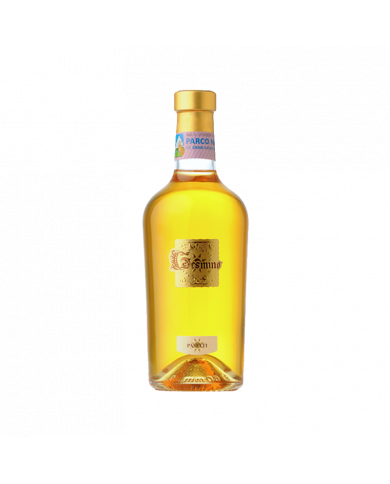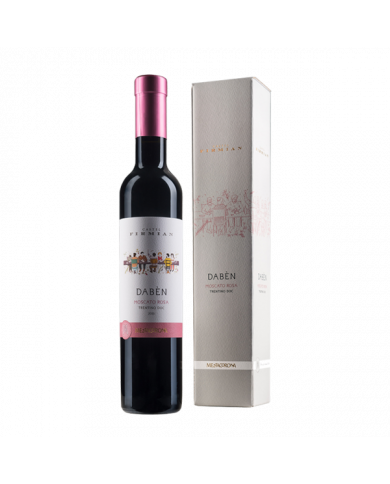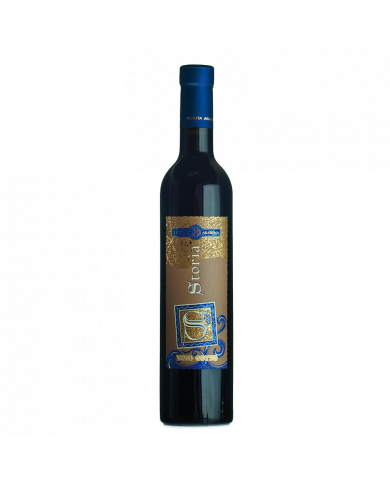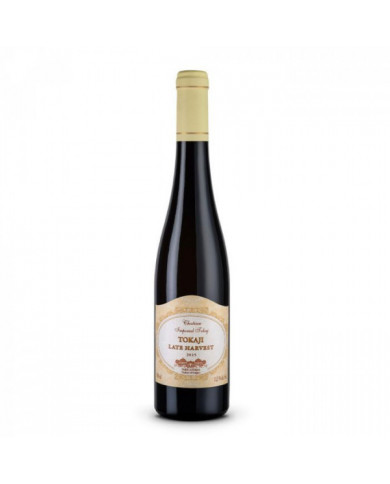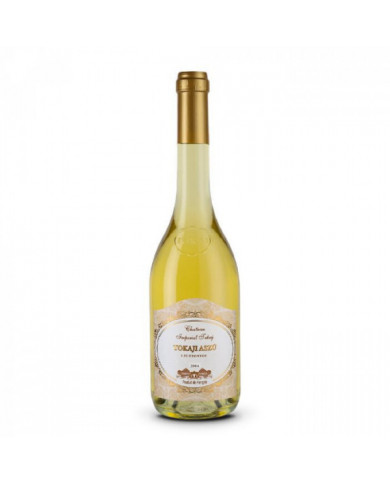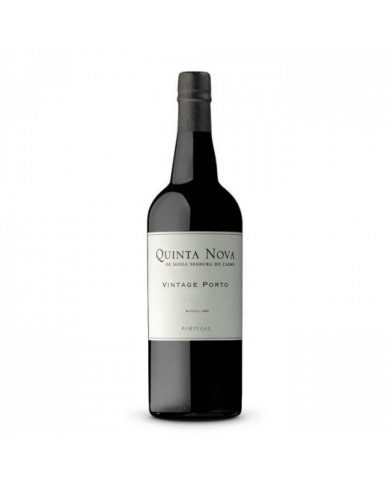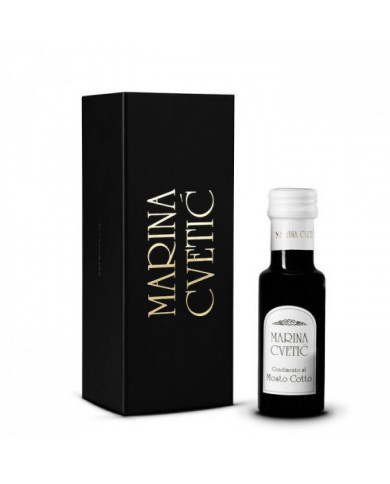Sweet wine obtained from white grapes from the Veneto region, with an ocher yellow colour, rich bouquet of candied fruit, apricot, raisins, vanilla and orange blossom. On the palate it is sweet and persuasive and is well balanced with the varietal freshness that gives elegance and longevity. Excellent with dry pastries, blue and medium/long-aged cheeses combined with jams and honey.
It has a more or less deep ruby red color tending towards garnet. The scents are clean, refined, delicate but intense and persistentŌĆ”
It has an amber yellow color with golden reflections. The aromas are intense and persistent and recall dried and candied fruitŌĆ”
Lands of Offida DOC Passerina
light amber color with antique golden tones; on the nose apricot, peach, and spices; in the mouth sweet without excesses, almondy, elegant and very full-bodied, long and persistent.
Sweet white wine, it is the dessert wine par excellence. It has a more or less intense straw yellow color depending on the vintage, an intense, aromatic and very persistent fruity aroma. The sweet taste is in harmonious balance with the low alcohol content (5% vol.) and with the acidity, never very high, but which gives the product a pleasant freshness. PAIRINGS: fresh fruit (peaches, strawberries, berriesŌĆ”) panna cotta cream-based desserts.
The combination we suggest is a goose foie gras escalope, but perfection is achieved in a glass, in front of the fireplace in good company!
Excellent pairing with small dry pastries or typical sweets such as "fregolota".
Excellent pairing with small dry pastries or typical sweets such as "fregolota".
Maculan 's Moscato Dindarello was obtained from 100% Moscato Bianco grapes grown on hilly soils of limestone and tuffaceous matrix located in the Breganze area (VI). After the harvest, the grapes were subjected to drying in the loft for about 1 month, a practice which allowed the grapes to obtain a higher sugar concentration. The alcoholic fermentation, aimed at transforming the sugars into alcohol, took place in steel vats. Before being marketed, this delicious straw wine rested for 3 months in the bottle.
Sweet and full-bodied, balanced, with a pleasant acid note and robust tannins. A persistent finish enhances the return of the rich aromatic bouquet already perceived on the nose.
The grapes, the same used for the production of Amarone, are left to dry in the plateaus for a few months and pressed in March when they have reached their maximum sugar concentration.
Intense ruby red with violet hues, intense, sweet and warm aroma of fruit and spices. The sweetness is accompanied by a right fresh note which adds to a pleasant tannic presence.
Golden yellow colour. Intense, persistent, floral and fruity aroma of sultanas, dried figs and walnuts, enriched by a spicy note. Intense and persistent also on the palate. Dessert wine that is best expressed after a year of aging in the bottle.
ŌĆ£...a crumb of happinessŌĆØ Of a beautiful golden yellow colour. Of great character, velvety and soft, it is fresh and elegant in the mouth. The nose shows notes of honey, spices and white flowers. "As mostly happens to those who, after having suffered a lot, finally grab a crumb of happiness..." A wine of great character, rich, velvety, sumptuous, golden. A great pleasure. By itself it is already a dessert. It helps to reflect and not forget to live well.
Cremes in Piedmontese dialect indicates the crimson, bright red color of ancient silks. Simple and elegant wine to make every event a special occasion. Aging in oak barrels for 6 months. It expresses fresh sensations of red fruit, black cherries and small berries. The sip is soft and enveloping, supported by a youthful freshness and a dense but gentle tannic texture.
La Vendemmia Tardiva Cristina was born to try to achieve the perfect balance. The softness and sweetness above all at the beginning are striking, which subsequently fades more and more into a note of great elegance.
Grape variety: 100% MOSCATO BIANCO DI CANELLI Altitude: 480 meters slm level Slope: 67% with South West exposure Training system: Low Guyot Soil: 45% tuffaceous - 48% sandstone - 7% calcium Average yield per hectare: 19 hl.
A sweet pink nectar that satisfies, with measure, harmony and smoothness. One of a kind.
Produced from a careful selection of Moscato from Sicily, Lo Zhara Passito is an excellence thanks to a unique and inimitable relationship between sweetness and freshness. Harmonious, enveloping, perfect, it is a sweet wine capable of a very long aging in the bottle, the emotions are guaranteed after many years. The grapes, dried on racks, are pressed and left to macerate for about 5 hours, then they are softly pressed and fermented at 18-20┬░.
This fine wine from the Antinori winery respects the local traditions of Tuscany. The denomination is that of Vin Santo della Valdichiana DOC. Produced from the blended vinification of Tuscan Trebbiano and Malvasia vines.
It comes from Montepulciano grapes harvested late and then left to dry until late winter.
The must is fermented in steel tanks and then left to mature in small oak barrels for nine months
White raisin wine, Capable of bringing wisdom and meditation even to those who, by the hand of fate, do not have it. The sensation of fullness on the palate is accompanied by a vertical sensation of freshness. Our favourite.
Color: Straw yellow color. Smell: Delicate bouquet, aromatic scent typical of the vine. Taste: Elegant taste. To pair with desserts.
Traditional Vin Santo both in the blend, Trebbiano and Malvasia, and in the processing method. The grapes, harvested in early October, are dried on racks until December, and then softly squeezed. The must obtained ferments slowly and refines for 5 years in small oak barrels (kegs).
Color: Intense ruby red. Smell: The nose is elegantly austere, with hints of black fruit in alcohol and hints of licorice. Taste: On the palate it has a broad and harmonious taste, extremely persistent.
Color: Dark ruby red color. Smell: Bouquet of raisin flowers and red fruit in alcohol, with hints of licorice. Taste: It is persistent with sweet spices and licorice.
Color: Golden yellow wine. Smell: Aromas of dried sweet fruit, cedar, dehydrated apricot and honey. Taste: Extremely sweet, mitigated by a good freshness, which prolongs the aromatic sensations of dried fruit.
Piasa Rischei is the wine produced solely with Moscato grapes, left to dry on the vine and harvested at the end of October, a part of the bunches is still left to dry on mats in an orchard. After fermentation, the wine is aged in barriques for 24 months. A passito balanced between freshness and sweetness. Great evolutionary capacity. Perfect to combine with cheeses and fois gras.
Red of the Pharaoh cathedral. Overripe Montepulciano harvested in November, when possible, aged in oak barrels and blended with different vintages, therefore always around 17 degrees and with a slight residual sugar.
Year: 2007 Designation: VQPRD Controguerra Doc Passito Nic├▓ Grapes: Montepulciano 100% Alcohol: 13.00% vol Format: 50cl Pairings: It goes well with dry desserts, sweet tarts, shortcrust pastry. Also suitable for aged cheese, pecorino. Excellent after a meal, meditation wine.
Year: 2007 Designation: VQPRD Controguerra Doc Passito Nic├▓ Grapes: Montepulciano 100% Alcohol: 13.00% vol Format: 50cl Pairings: It goes well with dry desserts, sweet tarts, shortcrust pastry. Also suitable for aged cheese, pecorino. Excellent after a meal, meditation wine.
The name of this label recalls the one and only architect of its being, it is in fact the sun The name of this label recalls the one and only architect of its being, it is in fact the summer sun of our beloved land, the summer element of our beloved land, the element that determines its organoleptic characteristics. which determines its organoleptic characteristics. A raisin wine of great value, our Solarys bianco, a late harvest of grapes from A raisin wine of great value, our Solarys bianco, a late harvest of grapes from autochthonous vines, grown as saplings, left on the plant to dry gradually until the autochthonous vine , grown as saplings, left on the plant to dry gradually until reaching the natural sugar concentration; sweet, never cloying, a delicate to reach the natural sugar concentration; sweet, never cloying, a delicate nectar to be served chilled, with fresh fruit tarts or blue cheeses.
The name of this label recalls the one and only architect of its being, it is in fact the sun The name of this label recalls the one and only architect of its being, it is in fact the summer sun of our beloved land, the summer element of our beloved earth, the element that determines its organoleptic characteristics. he determines its organoleptic characteristics. A raisin wine of great value, our Solarys rosso, a late harvest of grapes from A raisin wine of great value, our Solarys rosso, a late harvest of grapes from autochthonous vines, grown as saplings, left on the plant to dry gradually until the autochthonous vine , grown as saplings, left on the plant to dry gradually until reaching the natural sugar concentration; vinous, sweet, never cloying, a way to reach the natural sugar concentration; vinous, sweet, never cloying, a delicate nectar to be served in combination with the dry sweets typical of the region. delicate nectar to be served in combination with the dry sweets typical of the region.
Sweet wine obtained by drying grapes on racks. It is the traditional version of Sagrantino. The name derives from the Latin sacer: sacred wine consumed during the feasts of the Christian tradition.
Moscatello di Castiglione Angelucci is a natural passito wine obtained from the original ŌĆ£Casauriense biotypeŌĆØ clone, cultivated between 250 and 350 meters on medium-loose soils in the Casauria area, about 40 km away. from the sea and close to the mountains.
Excellent in combination with pastry desserts, fruit tarts, homemade focaccias and even desserts with creams.
Our Vin Santo In Pincis is produced only in the best years, when the conditions give the healthiest grapes and the highest sugar levels. Rigorously selected bunches of Trebbiano Toscano and Malvasia del Chianti undergo a long drying process, then the wine spends seven years in wooden barrels.
Our Vin Santo In Pincis is produced only in the best years, when the conditions give the healthiest grapes and the highest sugar levels. Rigorously selected bunches of Trebbiano Toscano and Malvasia del Chianti undergo a long drying process, then the wine spends seven years in wooden barrels.
Avignonesi 's Vin Santo di Montepulciano is a sweet wine of great elegance obtained from Malvasia and Trebbiano and aged for 10 years in casks. The nose releases intense aromas of caramel, chocolate, honey, orange peel and Mediterranean herbs. The taste is rich and enveloping with notes of figs, almonds, lemon and coffee
Avignonesi 's Vin Santo Occhio di Pernice is an extraordinarily rich sweet wine, produced from Sangiovese grapes and aged for 10 years in kegs. It exudes aromas of dates, dried fruit, panforte and sweet spices. On the palate it is sweet and sensual, infinite, with notes of cedar, salty candies and freshly baked biscuits
Forteto Pian dei Sogni Piemonte Brachetto Passito DOC is cherry red in colour. A wine with pleasant garnet reflections. Pian dei Sogni is produced in a hilly area at an altitude of over 400 meters slm It is made with the Guyot system according to traditional methods and by hand. This excellence comes from dried Bracchetto grapes. A Brachetto Passito Doc that stands out in terms of particular aromas and scents. Discover the hints of dried rose, strawberry jam, cherries in syrup and spices. Then savor it with hazelnut, walnut, almond, chocolate or chestnut cakes.
Piasa Rischei is the wine produced solely with Moscato grapes, left to dry on the vine and harvested at the end of October, a part of the bunches is still left to dry on mats in an orchard. After fermentation, the wine is aged in barriques for 24 months. A passito balanced between freshness and sweetness. Great evolutionary capacity. Perfect to combine with cheeses and fois gras.
Tuscan VinsantoŌĆ” a wine whose origins are lost in the mists of time. Vinsanto in Tuscany is such an important wine full of meaning that it was difficult to buy, it was an ambition to make it at home with your own hands; in every family there was a person in charge of this art, usually the father or grandfather. The hypothesized origins of this exquisite drink, as well as those of its singular name are different and are lost in the mists of time. A Sienese legend says that in the 14th century a friar distributed a wine that healed the sick, hence the belief that it was a miraculous wine, "Santo". However, it cannot be excluded that the name "holy" derives from the use that has always been made of it during Mass.
They are bunches with thick and consistent skins, high alcoholic potential and sustained acidity, which we know can give interesting and unprecedented nuances in the raisin version.
Enveloping in the mouth, with a long and pleasant finish, it is to be tried with a slice of delicious chocolate salami, with a spicy zola crouton and even alone, in peace and relaxation.
With an intense ruby red color, it is a velvety wine, which contains hints of cherry, raspberry and dried fig. On the palate it reveals slight notes of violet that pamper and caress the end of the meal. Maximum Expression: 8-10 years. Vinification: On the skins for 18 days, followed by static decanting in large barrels. The wine is aged for 9 months in barriques and then rests for 6 months in the bottle.
The ancient tradition of Vin Santo di F├©lsina is entirely contained in the passage of the ŌĆ£mothersŌĆØ from the kegs of one year to those of another. The modernity of the production lies in the most careful choices of the grapes, in the drying process of the bunches, in the addition of Sangiovese to characterize the wine according to the F├©lsina style, in the improvement of the vinification and in the aging.
Excellent with dry desserts, but also with soft cakes made with bitter chocolate or with berries. Try it with particularly tasty mature or blue cheeses.
Maculan 's Moscato Dindarello was obtained from 100% Moscato Bianco grapes grown on hilly soils of limestone and tuffaceous matrix located in the Breganze area (VI). After the harvest, the grapes were subjected to drying in the loft for about 1 month, a practice which allowed the grapes to obtain a higher sugar concentration. The alcoholic fermentation, aimed at transforming the sugars into alcohol, took place in steel vats. Before being marketed, this delicious straw wine rested for 3 months in the bottle.
PRODUCT IN LIMITED QUANTITY The Passito della Rocca wine was born as an experiment of the company to create a "sweet wine" different from the tradition of the area., Produced from 1988 to 2008
Sweet white Tuscan table wine produced with 25% Chardonnay, 15% Gew├╝rztraminer, 60% Sauvignon Blanc, all vines that are part of a particular vineyard with south-west exposure.
Lu Bambinell is the dialect word with which the people of Campli call the newborn baby. Mulled wine also enjoys this tender appellation here. The origin of the local name is linked to an ancient tradition: at the birth of a new life, the family to which it belongs produces the cooked wine at the first harvest which will then be tasted to celebrate the wedding day of the current baby. The product ferments and is stored for years in small oak barrels in which topping up is carried out with rituality. The charm of the gestures in the care of the product create a magical atmosphere of sharing and waiting.
The La Postilla label intoxicates important convivial situations, especially in the company of desserts, dried fruit and extra dark chocolate. The Moscato di Basilicata grapes that grow in the Basilicata vineyards are grown, selected and processed with extreme care and competence by the winemakers of the Cantine del Notaio winery. The result is a bubble with a lively and fine flavor rich in authentic notes.
With a bright gold color, the Passito of the Pasetti company releases intense and fine aromas and aromas. Fabulous passita version of the Moscatello di Castiglione, an ancient native grape variety brought to light after years of study and research.
The grapes, the same used for the production of Amarone, are left to dry in the plateaus for a few months and pressed in March when they have reached their maximum sugar concentration.
Fruit of the natural drying of aromatic grapes in the generous sun of a corner of Magna Graecia, Hekate is a naturally sweet Sicilian IGT passito.
This is a remarkable example of a traditional Chianti Vin Santo. It comes from grapes harvested from a single vineyard of 1 hectare cultivated with Malvasia di Toscana, Trebbiano Toscano and San Colombano. The grapes are dried for 3 months before pressing and aged in 100-litre oak barrels for 3 years before bottling and a further 3 months of aging in the cellar before being marketed. It displays aromas and flavors of dried fig, nuts, sultanas, leather and balsamic hints that make it a wonderful accompaniment to a cheese platter. A fine example of a traditionally produced fine dessert wine. Suitable for bottle aging up to 25 years after release.
The Moscato Rosa vine is a very ancient vine, of probable Greek origins which, passing through Sicily, arrived in Trentino in the mid-nineteenth century. The name seems to derive more from the primary aroma of rose that characterizes this aromatic vine, than from the color of the berry, which is actually bluish-black. Moscato Rosa is very delicate to cultivate as it is subject to various problems in flowering and ripening which greatly reduce its production capacity. For all these reasons, as well as being noble, it is also a precious wine, also due to its great ability to accumulate large quantities of sugar. This wine is obtained from small vineyards located on the alluvial fan of the town of Pressano, north of Trento, at about 250-300 metres, facing south-southwest on clayey-limestone soils and in a well-ventilated area to avoid health problems and allow the grapes the achievement of a perfect level of aromatic and sugar ripening. The grapes are harvested by hand very late after a natural drying on the vine and, after destemming, are subjected to traditional vinification with the addition of selected yeasts at a temperature of 22-24┬░C for 6-8 days. Then with the use of cold (5┬░C), the fermentation process is naturally blocked with the consequent maintenance of the desired residual sugar. It then continues with the collection of only flower wine without pressing of the pomace. This is followed by conservation in steel for a few months, always at a low temperature to preserve the aromas of this elegant wine
Bright amber yellow, the nose expresses a wonderful olfactory profile composed of notes of apricot and peach, dried figs and honey, aromatic herbs and mineral notes. Intense and bewitching aromas, solar and Mediterranean, which open to an immense taste for complexity, perfect in the fusion of sweetness, flavor and softness. Very long, interminable, poignant. Strictly at the end of a meal, ŌĆ£Ben Ry├®ŌĆØ is a perfect accompaniment to blue or very aged cheeses and foie gras. Also excellent on ricotta desserts and dry pastries.
Bright amber yellow, the nose expresses a wonderful olfactory profile composed of notes of apricot and peach, dried figs and honey, aromatic herbs and mineral notes. Intense and bewitching aromas, solar and Mediterranean, which open to an immense taste for complexity, perfect in the fusion of sweetness, flavor and softness. Very long, interminable, poignant. Strictly at the end of a meal, ŌĆ£Ben Ry├®ŌĆØ is a perfect accompaniment to blue or very aged cheeses and foie gras. Also excellent on ricotta desserts and dry pastries.
The name means that it is a product that originates from history. In fact, in the past years it was customary in peasant houses that, at the birth of a child, especially the firstborn, the father or grandfather of the unborn child would produce a particular wine at the first harvest, the "cooked wine". This wine was kept for years in small wooden barrels. It was opened, to offer it to diners, on the occasion of the First Communion and subsequently for the marriage of the child. Deliciously accompanied by typical Abruzzo desserts, sweets with almonds or in any case dry pasta.
The care and effort of an extreme production work are illuminated by golden flashes that bring with them an intriguing bouquet, full of sweetness and freshness.
Sweet wine obtained by drying grapes on racks. It is the traditional version of Sagrantino. The name derives from the Latin sacer: sacred wine consumed during the feasts of the Christian tradition.
Drying of native red grapes and the traditional method blend together in this wine, the result of a blend with a rigorous character. The unique style expresses elegance and pleasantness, enhancing the territory as the main protagonist of the production philosophy.
Drying of native red grapes and the traditional method blend together in this wine, the result of a blend with a rigorous character. The unique style expresses elegance and pleasantness, enhancing the territory as the main protagonist of the production philosophy.
The Passito DOC IGT Terre di Chieti comes from precious white Moscato grapes, partially dried for about 3 months at controlled temperature and humidity. The wine ages in French oak barriques for about 24 months and then follows a period of aging in steel. It is a soft passito, rich in nuances, to always be kept in the cellar.
Discover the Delight of Sweet Wines: A Journey for Your Senses
Sweet wines can be a real treat for your senses. The way sweet wine touches your taste buds and nostrils with its rich fragrances will make you feel in heaven. The magic of sweet wines is unique and is becoming increasingly popular among consumers seeking a unique sensory experience. If you are looking to discover the beauty of sweet wines, then you are in the right place. This article will explore some of the best sweet wines and how to choose the right one for you.
What is a Sweet Wine?
First of all, we need to clarify what a sweet wine is. A sweet wine is a wine that contains a certain amount of sugar. This sugar can be added during fermentation or it can be added afterwards. The amount of sugar in sweet wine can vary from slightly sweet to very sweet. Sweet wines are often sweeter than dry wines because they contain more sugar.
Most Popular Sweet Wines
Sweet wines can be divided into three broad categories: dessert wines, sparkling wines and aromatised wines. Dessert wines are those that are sweeter and more aromatic, such as Port, Sherry, Muscat and Madeira. Sparkling wines are carbonated wines such as Champagne, sparkling Muscat, Prosecco and Cava. Aromatised wines are those with a fruity flavour, such as Riesling, Gew├╝rztraminer and Gr├╝ner Veltliner.
How to Choose a Sweet Wine
If you are interested in trying a sweet wine, there are a few things to consider. First, you need to decide whether you want a dessert wine, a sparkling wine or a flavoured wine. You will also have to consider your budget and personal taste. If you are a beginner, you might want to start with a less expensive and less sweet wine, such as a Muscat or Riesling. If you are an expert, then you may want to explore rarer and more expensive wines such as a Port or Sherry.
How to Serve a Sweet Wine
If you have decided to try a sweet wine, it is important to serve it in the right way. Dessert wines should be served chilled, while sparkling and flavoured wines should be served at room temperature. The right temperature for a sweet wine varies depending on the type of wine, so be sure to read the labels before serving. Dessert wines should be served in larger dessert glasses, while sparkling and aromatised wines should be served in wine glasses.
How to Pair a Sweet Wine
One of the advantages of sweet wines is that they can be paired with many different dishes. Dessert wines can be paired with desserts, cheeses and meats. Sparkling wines can be paired with all kinds of dishes, from savoury to sweet. Aromatised wines are particularly versatile and can be paired with fish, meat and vegetable dishes.
Conclusion
Sweet wines are a fun and relaxing way to enjoy a meal or an evening. Whether you are a beginner or an expert, there is a sweet wine to suit your needs. Remember to choose the right wine for your meal, serve it at the right temperature and pair it correctly. If you follow these steps, you will definitely enjoy the deliciousness of sweet wines.



